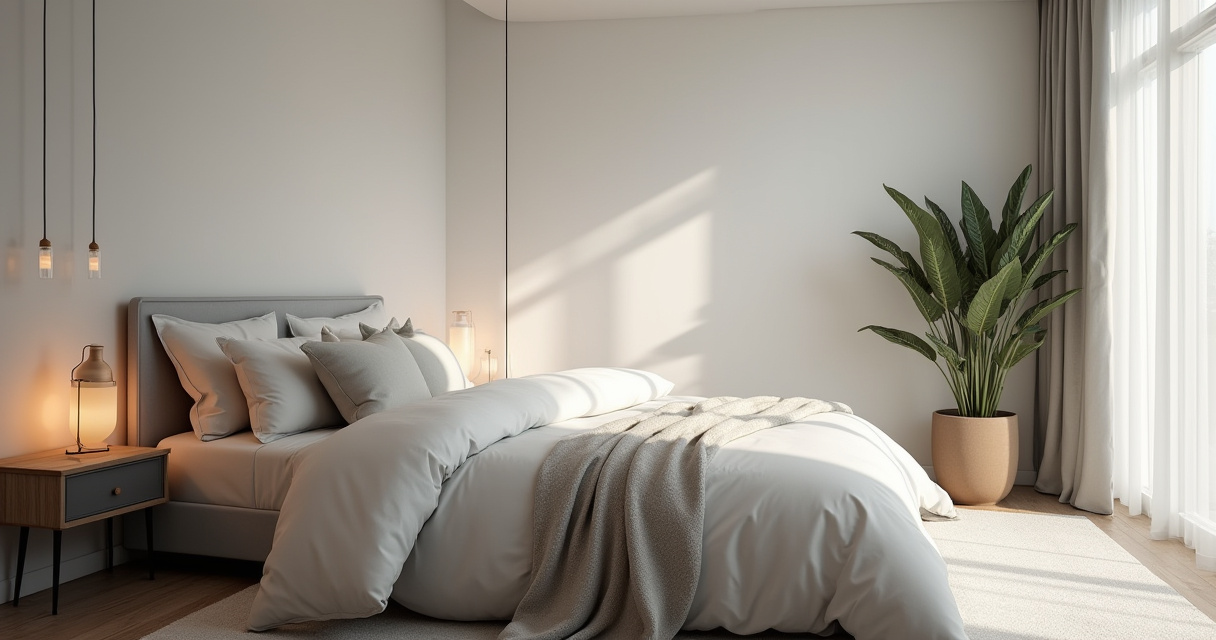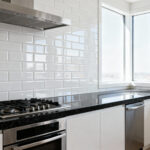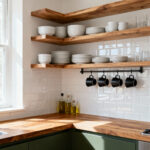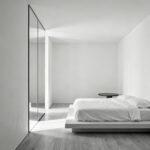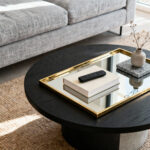Can we talk about why everyone gets bedroom decor wrong? They scroll through Pinterest, save a bunch of photos of serene, minimalist rooms with a single fiddle-leaf fig in the corner, and then try to replicate it. But their room ends up feeling cluttered and chaotic, not calm. It’s because they’re treating it like decorating. They’re just adding stuff.
As an architectural photographer for 15 years, I’ve shot hundreds of bedrooms—from hyper-styled magazine spreads to the lived-in spaces of real clients. The difference between a room that looks good and one that feels good comes down to structure, not stuff. You have to build the foundation first. These aren’t just tips; they’re the technical and artistic principles that create a room that is visually coherent, functionally sound, and actually serves its purpose: to be your sanctuary.
Foundational Planning & Smart Layout Strategies (Part 1)
Before you even think about buying a pillow, we have to talk about the bones of the room. This is the part everyone skips because it’s not as fun as shopping, but getting this right saves you money, time, and the headache of a room that just never feels “right.” This is where you set the stage for everything else.
1. Define Your Bedroom’s Core Purpose and Mood
First things first: What is this room for? I know, you sleep in it. But is that all? Is it a quiet reading space? A place to meditate? A last-minute home office? The biggest mistake people make is trying to force too many conflicting functions into one space. A room with a Peloton in the corner is not a tranquil sanctuary. Be honest and be specific. Write down its primary purpose—for example, “A sanctuary for deep sleep and quiet reading only.”
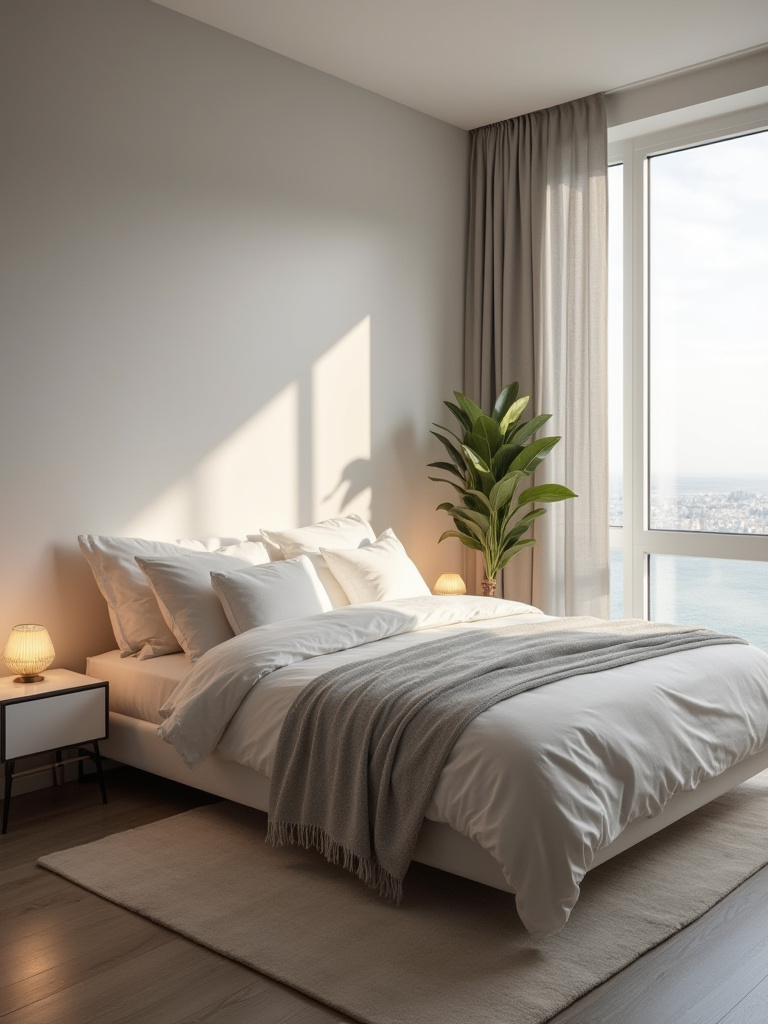
Once you have that purpose statement, every single decision you make must serve it. Does that bright, energizing paint color serve “deep sleep”? No. Does that bulky desk serve a “quiet sanctuary”? Absolutely not. This single step acts as a filter, eliminating thousands of bad choices before you even have to make them. A client of mine finally admitted his bedroom was a chaotic multi-purpose zone. We moved the desk and workout gear out, and he immediately reported sleeping better. It wasn’t magic; it was intentionality.
2. Master a Cohesive Color Palette for Visual Harmony
Forget the 60-30-10 rule. It’s a decent starting point for beginners, but it’s rigid and doesn’t account for the most important element in your room: light. As a photographer, I can tell you that color doesn’t exist in a vacuum. A beautiful greige paint swatch can look muddy and depressing in a north-facing room with cool, indirect light. That same color could look warm and sophisticated in a room flooded with golden afternoon sun.
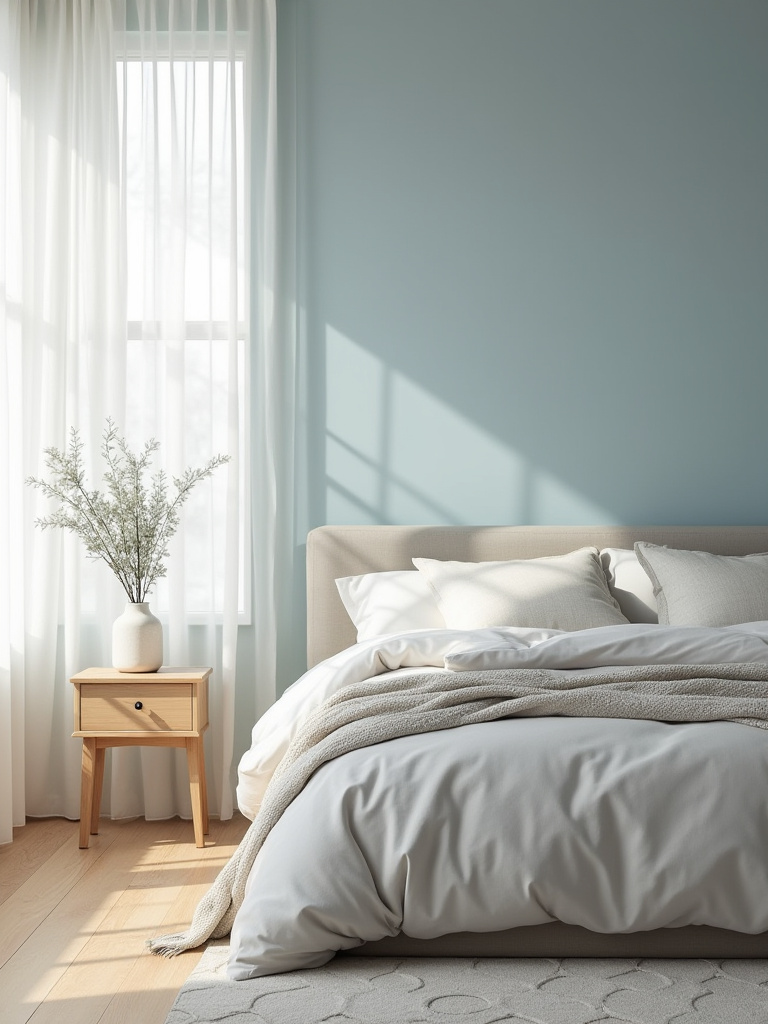
So here’s the real process. First, pick a core feeling—calm, cozy, airy. Then, find your main color inspiration. Maybe it’s a piece of art or a rug. Pull 2-3 colors from that. Now, get sample pots and paint large swatches (at least 2×2 feet) on every wall. Watch how the light hits them throughout the day—morning, noon, and night, with the lights on and off. You’re not just choosing a color; you’re choosing how that color interacts with the unique light in your space.
3. Optimize Furniture Placement for Flow and Functionality
People think furniture layout is about cramming things in. It’s not. It’s about creating composition and flow. Your bed is the focal point. In most cases, it should be on the wall you see when you first enter, creating a clear and inviting sightline. From a photographer’s perspective, this anchor piece gives the composition stability. Everything else arranges itself around this anchor. You need clear pathways—at least 30-36 inches—around the bed and to the closet.
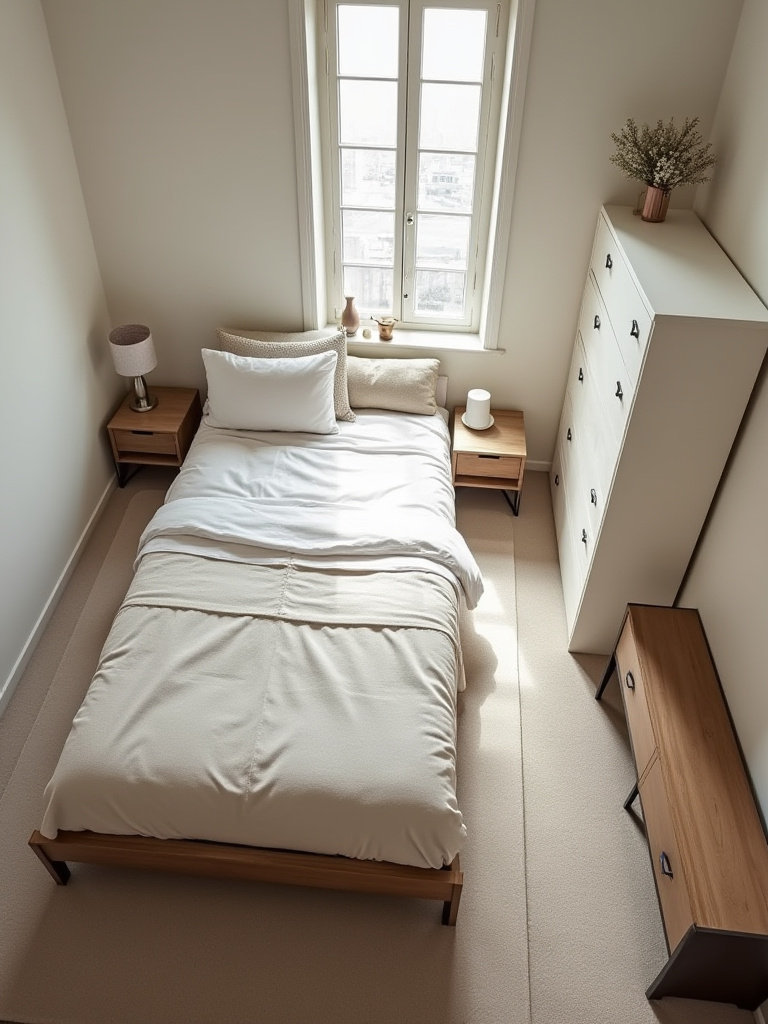
Think about how your eye moves through the space. A poorly placed dresser can act like a visual roadblock, making the room feel choppy and smaller. I once saw a client lose a massive amount of perceived space by pushing a huge armoire against a short wall, blocking the flow to the window. We moved it to the long, main wall, and the room instantly felt balanced and twice as big. Use painter’s tape on the floor to mock up furniture footprints before you move a single heavy object. You’ll thank me later.
4. Strategically Layer Lighting to Create Ambiance and Practicality
This is my biggest pet peeve. One harsh overhead light—what I call the “interrogation lamp”—is a crime against good design. A well-lit room needs at least three layers of light: ambient, task, and accent. Ambient is your overall illumination (that overhead light, but on a dimmer). Task is focused light for specific activities, like a reading lamp by a chair or sconces by the bed. Accent is about creating mood and highlighting features, like a small light aimed at a piece of art.
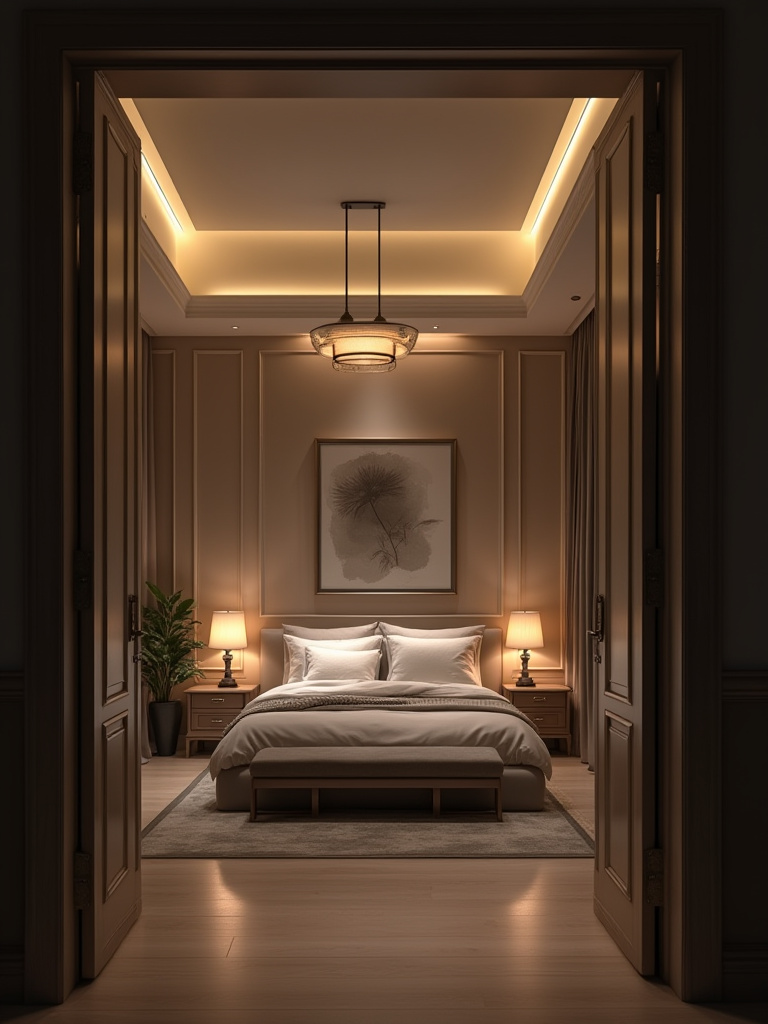
The real pro move is paying attention to color temperature, measured in Kelvins (K). For a bedroom, you want warm light, around 2700K. It mimics the gentle glow of a sunset or candlelight and signals to your brain that it’s time to wind down. The cool, blue-ish light from many standard LEDs (4000K+) is great for an office but terrible for a sleep sanctuary because it suppresses melatonin. All your bulbs should be dimmable and in that warm 2700K range. It’s a technical detail that makes all the emotional difference.
Foundational Planning & Smart Layout Strategies (Part 2)
We’re still in the planning phase because, trust me, it’s that important. Think of this as setting up the tripod and composing the shot before you press the shutter. These next steps are about working with the room’s existing architecture to make it the best version of itself.
5. Maximize Natural Light with Thoughtful Window Treatments
Your windows are your primary light source; don’t strangle them with bad curtains. Everyone buys blackout curtains and keeps them closed all day, living in a cave. The trick is to layer your window treatments. You need two layers on a double rod: an inner layer of sheer curtains and an outer layer of blackout drapes. The sheers give you privacy during the day while diffusing the natural light beautifully, making it soft and ethereal. The blackout layer is purely functional, for sleeping in.
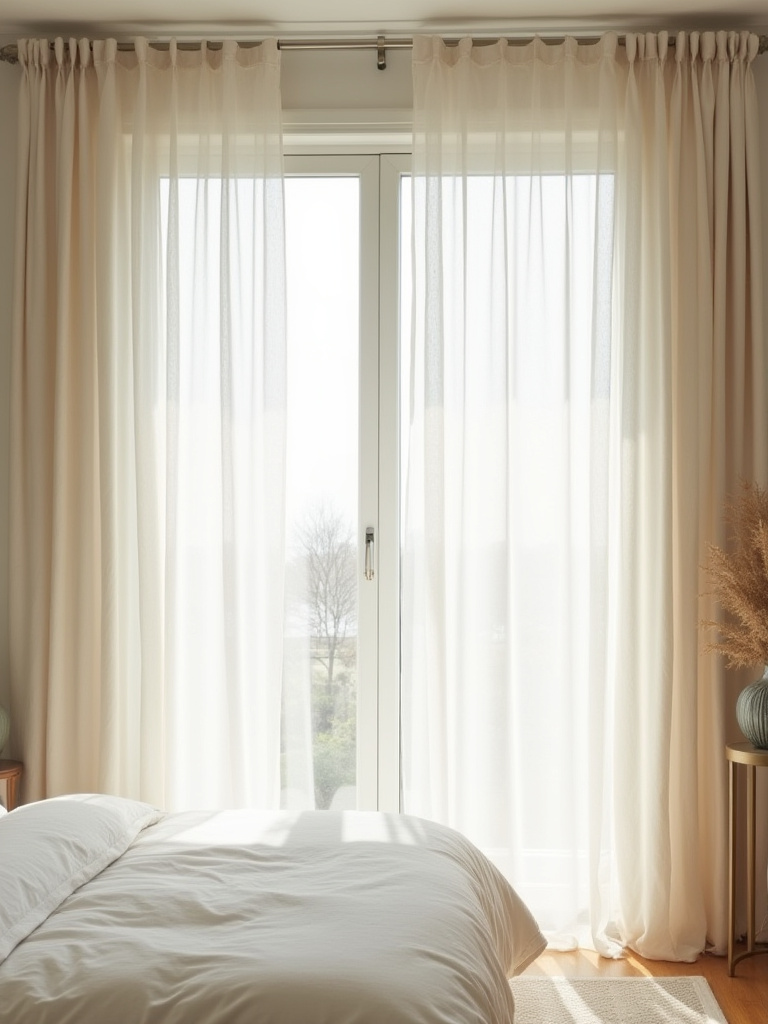
And please, hang your curtain rod correctly. Mount it 6-12 inches wider than the window frame on each side and at least 4-6 inches above it. This makes the window look bigger and allows you to pull the curtains completely off the glass, letting in every last drop of light. When the curtains bunch up over the edges of the window, you’re shrinking your light source and making the room feel claustrophobic. It’s the visual equivalent of mumbling.
6. Accurately Measure Your Space to Prevent Overcrowding
This isn’t just about making sure the bed fits. It’s about ensuring the entire composition works. I learned this the hard way early in my career. I helped a friend pick out this gorgeous, oversized dresser online. It technically fit against the wall, but we forgot to measure the depth with the drawers open. He couldn’t open them all the way without hitting the bed frame. The beautiful dresser became a useless, frustrating box.
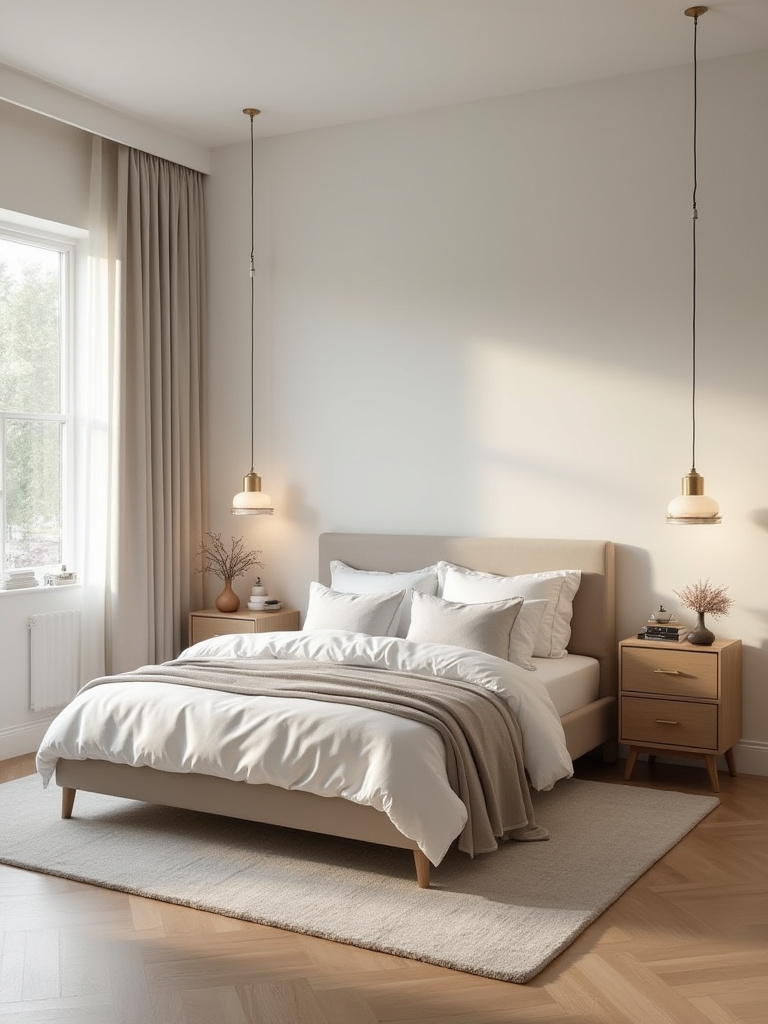
Measure the room’s length and width, but also measure doorways, hallways, and stairwells. Measure the height, width, and depth of every piece of furniture. Then draw it all to scale on graph paper or use a simple online tool. You have to account for functional space—the arc of a swinging door, the pull of a drawer, the space you need to stand to open your closet. Precision here prevents massive, costly mistakes later.
Smart Furniture Selection & Practicality (Part 1)
Now that you have a solid plan, we can talk about the actual pieces. Furniture is an investment in both form and function. Each piece needs to earn its place in the room, both by looking good and working hard.
7. Choose the Perfect Bed Frame for Comfort and Style
The bed frame is the anchor of the entire room. Its visual weight and style will dictate almost everything else. A huge, dark sleigh bed will create a totally different feel than a minimalist metal platform frame. Choose a frame that matches the purpose and mood you defined back in step one. But don’t just think about style; think about support. A cheap, flimsy frame will squeak and won’t properly support your mattress, potentially shortening its lifespan and hurting your back.
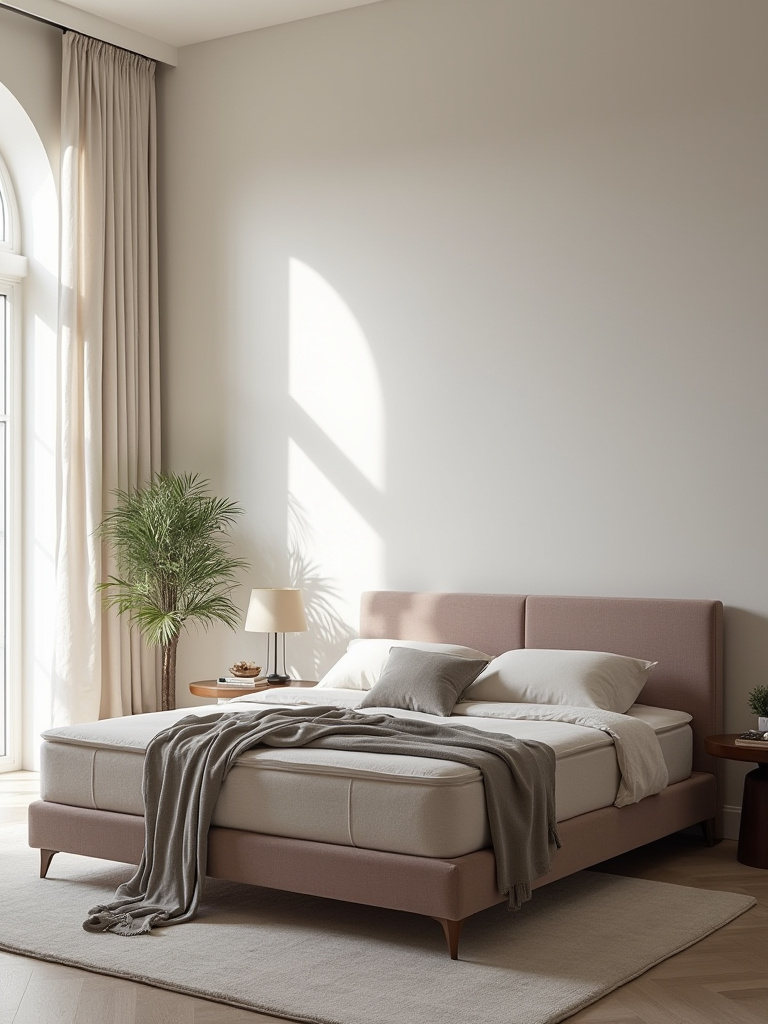
Look at the slat system. Slats should be no more than 3 inches apart for most modern mattresses, especially memory foam. If they’re wider, your mattress can sag and break down. Also, consider the frame’s height and profile. A low platform bed creates a more grounded, zen-like feel, while a taller bed can feel more traditional and grand—but also provides more under-bed storage space, which is critical for clutter control.
8. Integrate Discreet Storage Solutions for Clutter Control
The enemy of a serene photograph—and a serene bedroom—is clutter. Your goal should be to have a designated, hidden home for everything. This is where multi-functional furniture is your best friend. A bed frame with built-in drawers or a storage ottoman at the foot of the bed can eliminate the need for a bulky, space-hogging dresser.
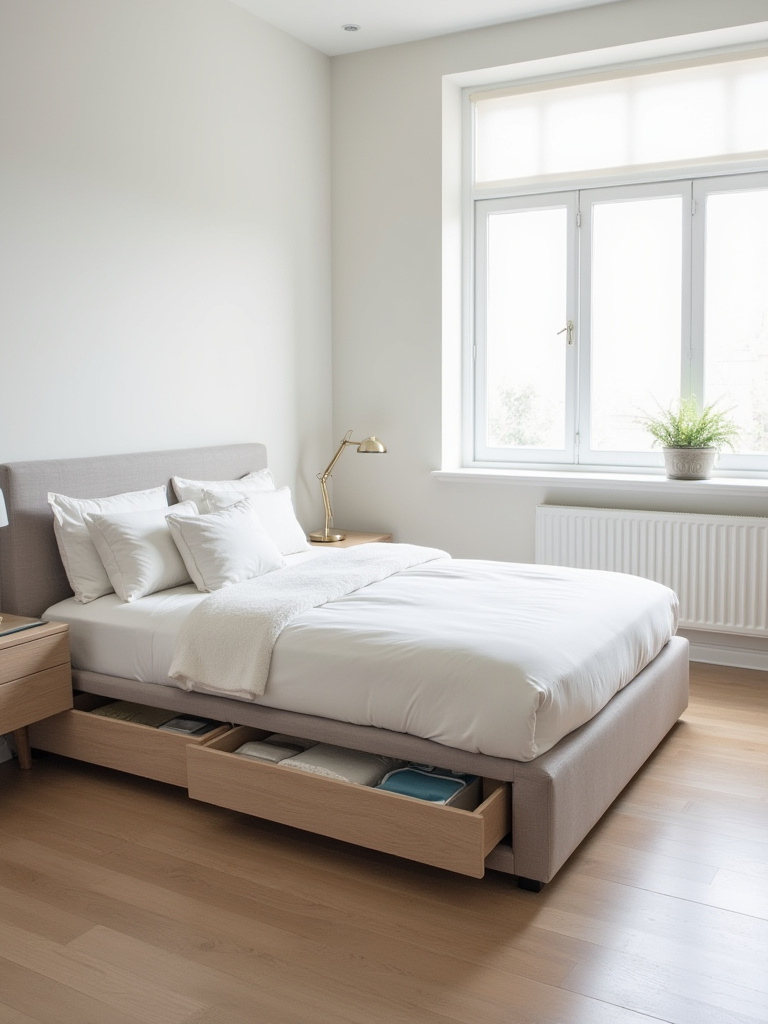
Think vertically and invisibly. Tall, narrow shelving units draw the eye up and take up less floor space. I love floating shelves or built-ins around a headboard for books and charging devices, which keeps nightstand surfaces clear. One of my clients had a tiny bedroom, and we replaced their two dressers with one storage bed. The room instantly felt 30% larger because we reclaimed so much visible floor space. Clean lines and clear surfaces calm the mind.
9. Select Nightstands that Offer Both Utility and Design
Your nightstands are not an afterthought. They are the functional bookends to your bed, and their scale is critical. The most common mistake is choosing nightstands that are too tall or too short. The surface of your nightstand should be roughly the same height as the top of your mattress. Any higher or lower and it becomes awkward to use and looks visually disconnected.
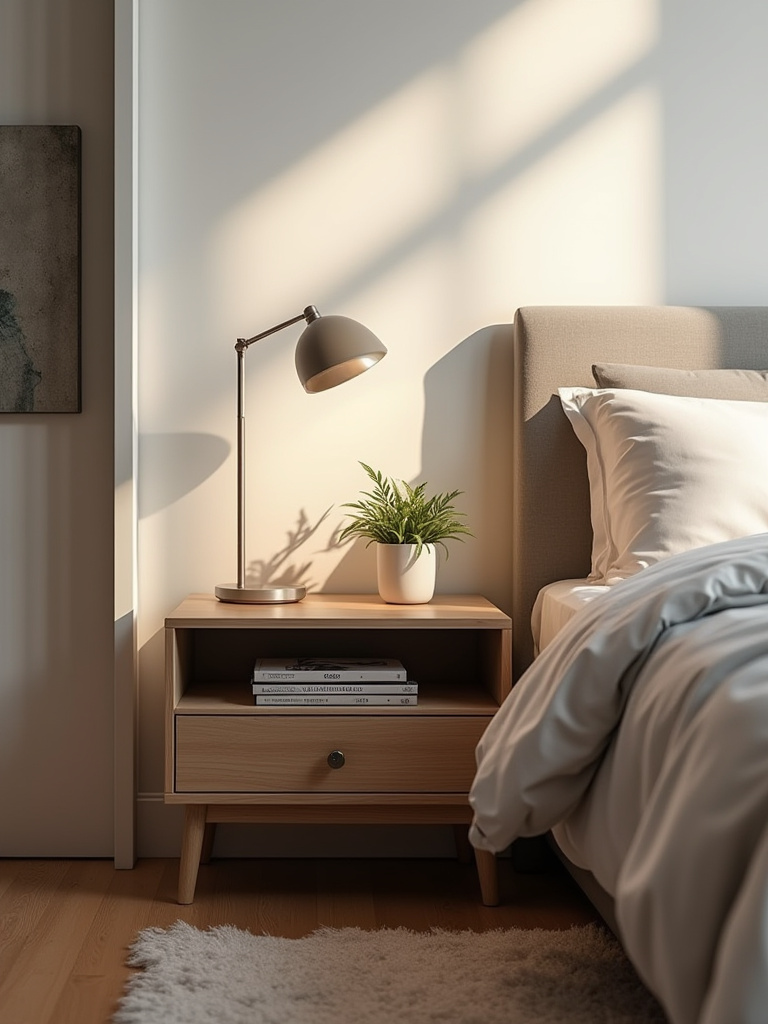
Think about what you actually need it for. If you just need a spot for a lamp and your phone, a small floating shelf is chic and saves space. If you’re a reader with glasses, lotions, and books, you need at least one drawer to hide that stuff away. Don’t be afraid to use two different nightstands if your needs differ from your partner’s, as long as they are a similar height and visual weight to maintain balance.
10. Incorporate a Statement Furniture Piece as a Focal Point
Every good composition has a focal point that tells you where to look first. In a bedroom, this is often the bed, but you can create a secondary focal point with a stunning piece of furniture. This could be a beautifully carved antique armoire, a sculptural dresser, or an elegant accent chair in a vibrant color. This one piece sets the tone and gives the room a curated, designer feel.
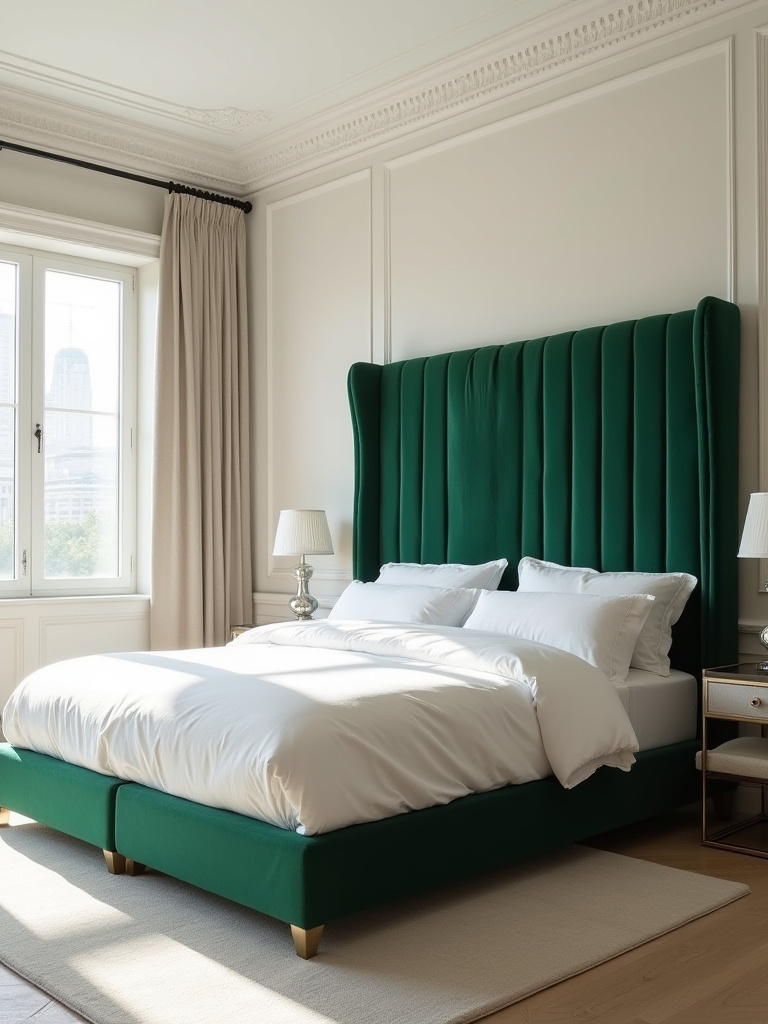
The key is to let that piece be the star. The other furniture should be quieter and more complementary. If you have a dramatic headboard and a loud-patterned armchair and an ornate dresser, they’re all screaming for attention and the result is just noise. Pick one hero. Give it space to breathe and support it with simpler surrounding pieces. That’s how you create impact instead of chaos.
Smart Furniture Selection & Practicality (Part 2)
We’re moving beyond the main structure and into the elements that directly impact your comfort. These are the pieces that make the room not just look good, but feel incredible. This is where you invest in your actual well-being.
11. Prioritize a Comfortable and Supportive Mattress with Premium Bedding
This is the single most important investment for your bedroom, period. A good mattress is a health decision, not a decor decision. You need something that supports your spine in its natural alignment based on your primary sleeping position. Don’t get hung up on buzzwords like “orthopedic” or “gel-infused.” The only way to know if a mattress is right for you is to test it, which is why a generous home trial period (100+ nights) is non-negotiable.
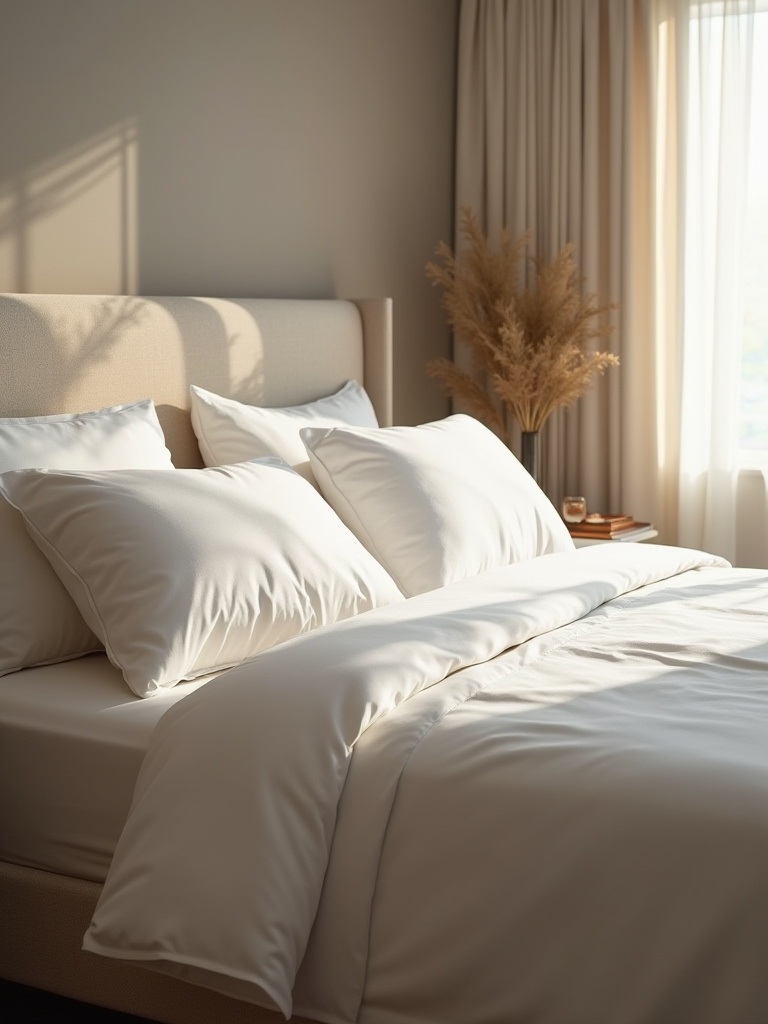
Once you have the mattress, don’t ruin it with cheap, synthetic bedding. Everyone gets obsessed with thread count, but it’s mostly a marketing gimmick. What really matters is the material and the weave. For breathability, nothing beats natural fibers like long-staple cotton, linen, or bamboo. They wick away moisture and keep you from overheating. Investing in one great set of sheets that feels amazing against your skin will do more for your comfort than a dozen decorative pillows.
12. Add a Cozy Seating Nook for Relaxation or Reading
If you have the space, creating a small secondary zone in your bedroom elevates it from just a place to sleep into a true retreat. This is a dedicated spot—away from your bed—for quiet activities. A comfortable armchair, a small side table, and a good reading lamp in a corner creates a psychological separation from the day’s stresses. This tells your brain, “This is a place for rest and quiet.”
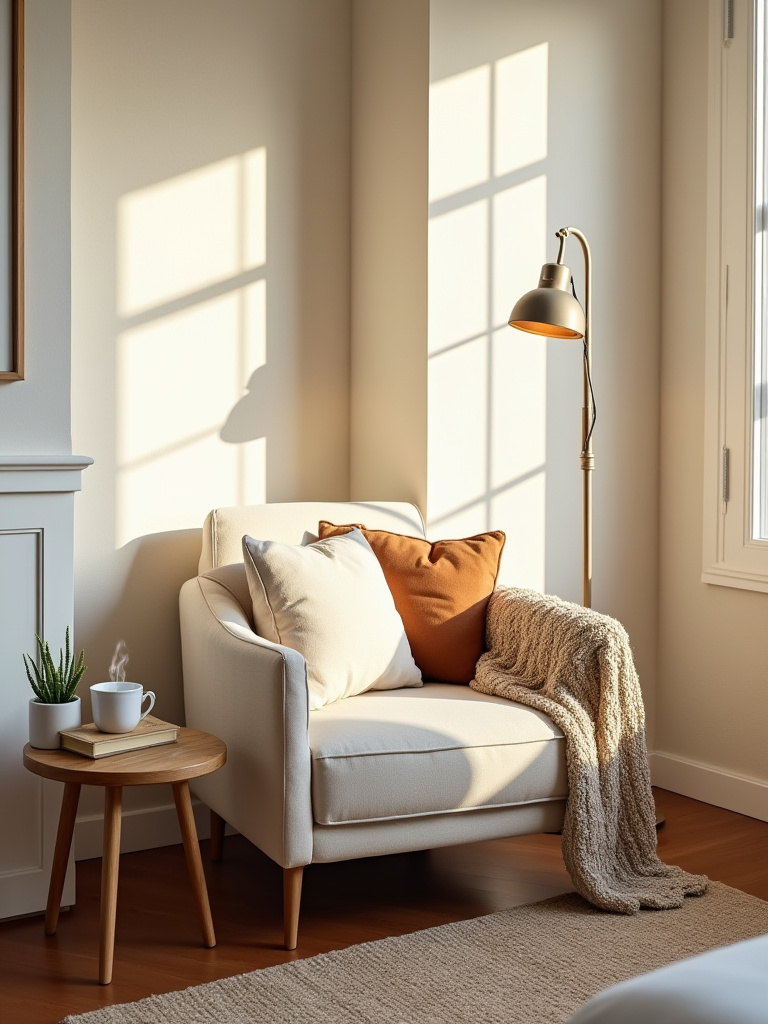
This nook doesn’t have to be big. It can be a simple upholstered bench under a window or a small chaise lounge. The point is to create a “vignette”—a small, curated scene within the larger room. Visually, it adds depth and makes the room feel more purposeful. Functionally, it gives you a place to unwind without getting into bed, which sleep experts say improves sleep hygiene.
Elevating Aesthetics & Personalized Ambiance (Part 1)
With the foundation laid and the main furniture in place, now we get to add the layers that bring the room to life. This is where personality comes in. These elements are about texture, light, and personal expression.
13. Elevate Your Walls with Art, Mirrors, or Feature Treatments
Blank walls are a wasted opportunity. You don’t have to cover every surface, but intentional wall decor is what makes a room feel finished and personal. My biggest pet peeve here is art hung too high. People float it halfway up the wall like it’s going to escape. The center of the artwork should be at eye level, which is about 57-60 inches from the floor. This connects the art to the human scale of the room.
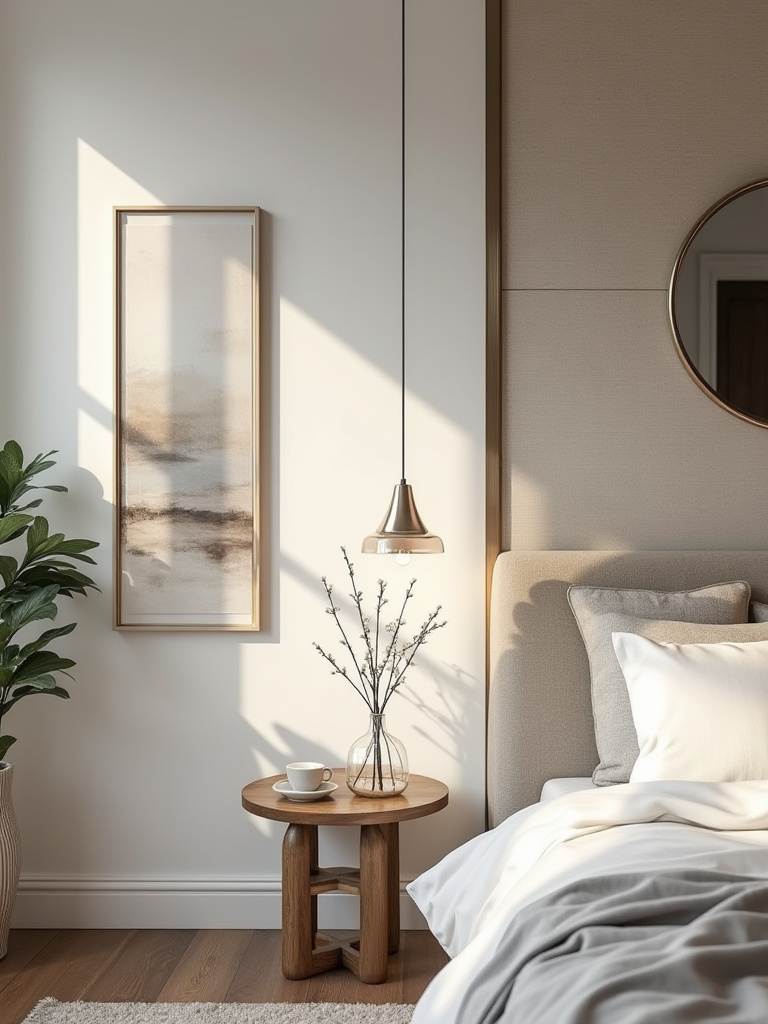
Mirrors are a fantastic tool, especially in smaller rooms. Placed opposite a window, a large mirror will double your natural light and create an illusion of depth. Just be mindful of what it’s reflecting. A mirror reflecting a cluttered corner will only amplify the mess. A feature treatment, like a wallpapered accent wall behind the bed or subtle wood paneling, adds texture and grounds the entire room, acting as a beautiful backdrop for your headboard.
14. Introduce Luxurious Texture Through Layered Textiles
A room with only flat, smooth surfaces feels sterile and cold. Texture is what makes a space feel rich, cozy, and inviting. As a photographer, I know that the way light hits different materials is what creates visual interest. You need a mix of textures. Think about a chunky knit throw draped over a smooth linen duvet, with a velvet pillow and a woven area rug underfoot.
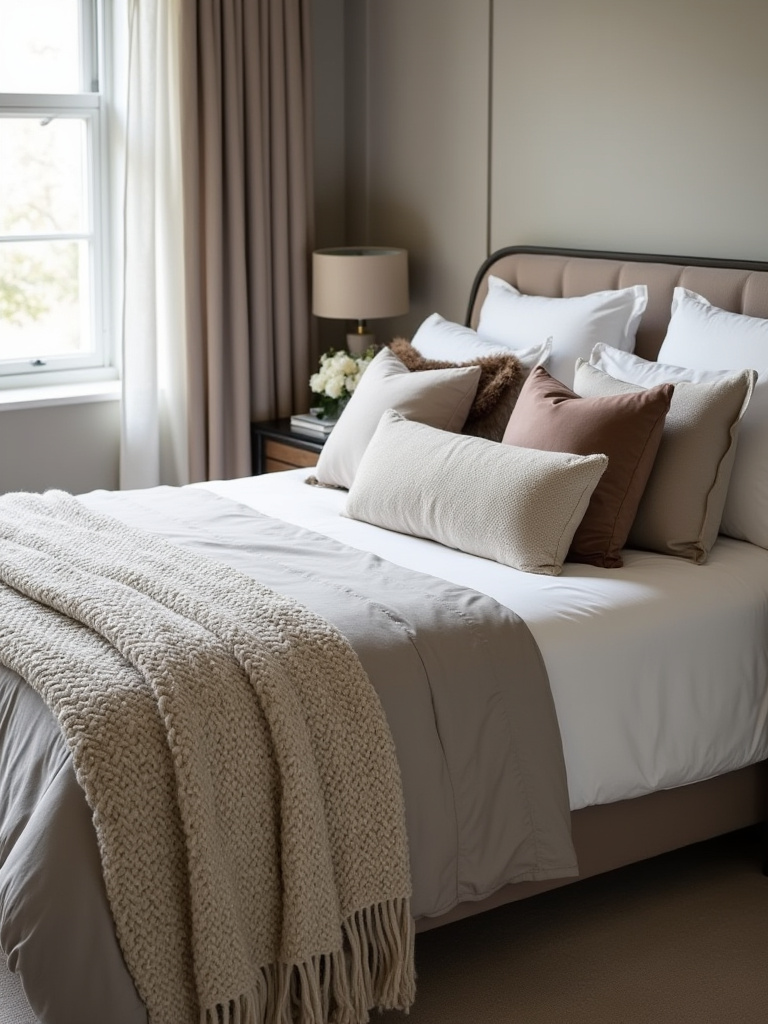
This is an easy and relatively inexpensive way to add a layer of sophistication. Mix materials like wool, cashmere, faux fur, linen, and cotton. A simple monochromatic color palette can look incredibly dynamic and complex just by playing with different textures. It engages not just the eye but also the sense of touch, making the room a true sensory experience.
15. Bring Life and Freshness into the Room with Indoor Plants
Plants are a design cheat code. They add an organic element that breaks up all the straight lines and hard surfaces of furniture. They add color, life, and literally improve your air quality. Even a single, well-placed plant can transform a sterile corner into a point of interest.
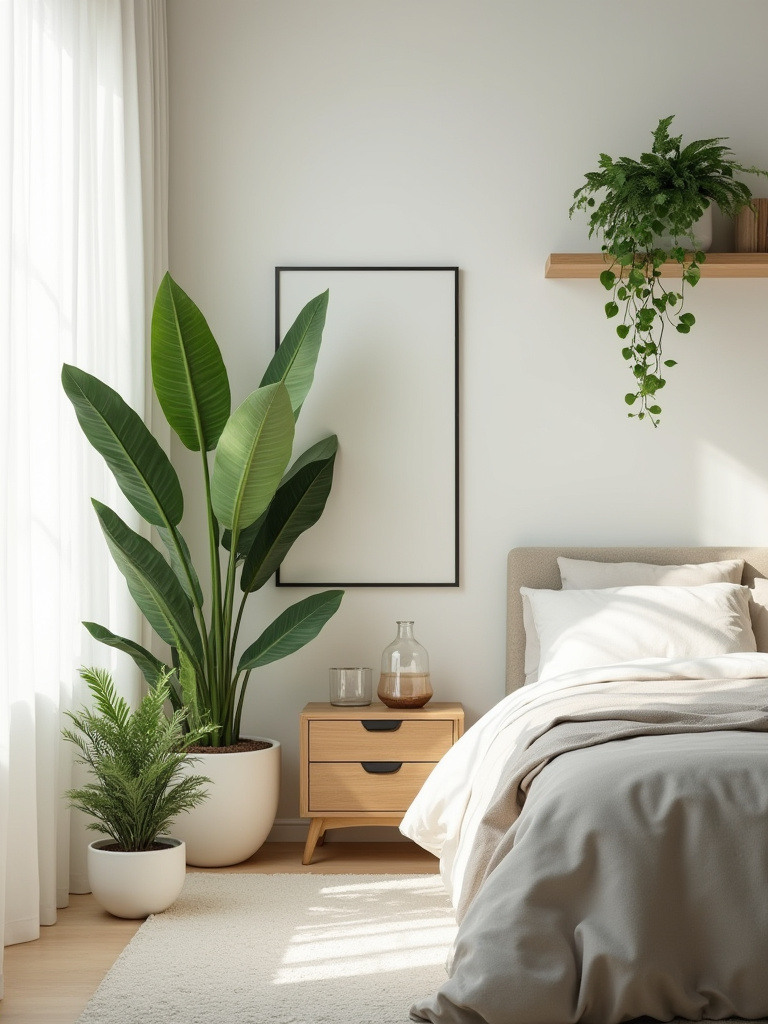
Choose plants that are appropriate for the light in your room. Snake plants and ZZ plants are incredibly low-maintenance and tolerate low light, making them perfect for bedrooms. A trailing pothos on a high shelf adds beautiful verticality. Choose a planter that complements your decor. The pot is just as important as the plant itself; it’s an accessory that should tie into your overall aesthetic.
16. Personalize Your Space with Curated Decor Accents
This is the final layer, the personal touch. But curated is the keyword. This isn’t about filling every surface with knick-knacks. It’s about selecting a few meaningful objects and displaying them thoughtfully. Use the “Rule of Three”—grouping objects in odd numbers (like three) is more visually appealing than even numbers.
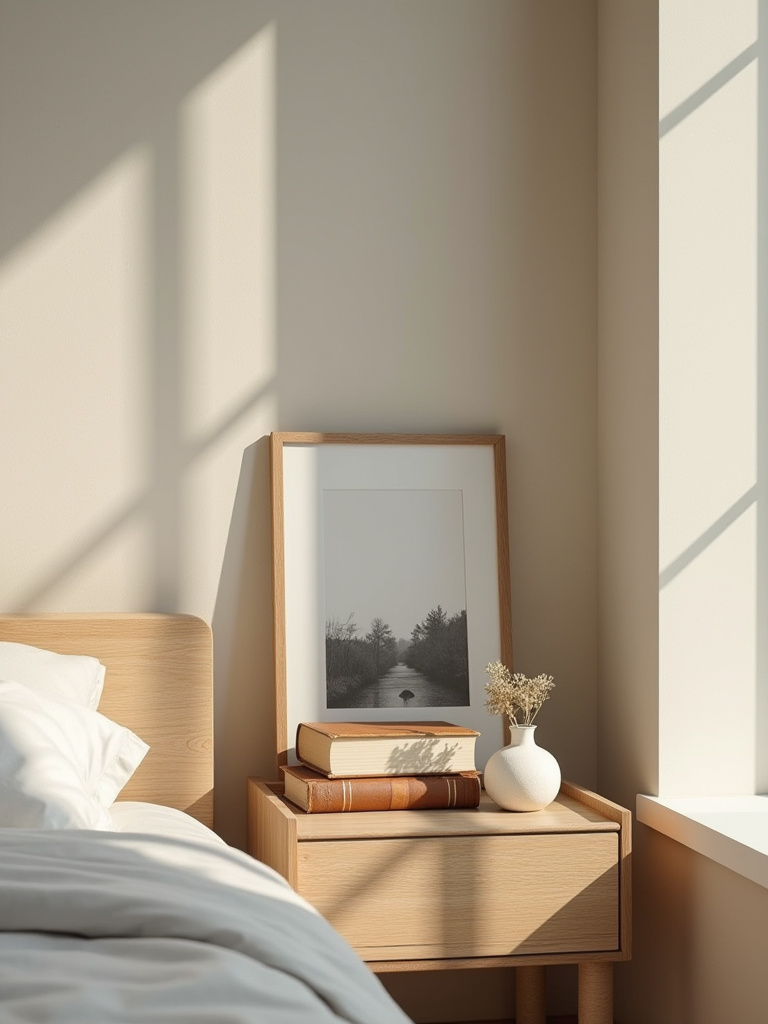
Arrange items into small vignettes on your dresser or shelves. Vary the height and texture of the objects within the group—for example, a stack of books (horizontal), a tall vase (vertical), and a small, round dish. This is your chance to tell your story. Display a few cherished photos, a souvenir from a favorite trip, or a beautiful ceramic piece from a local artist. It’s these personal details that make a space feel like yours.
Elevating Aesthetics & Personalized Ambiance (Part 2)
We’ve covered the visual and the tactile. Now let’s talk about the invisible elements that have a huge impact on how a room feels: sound and smarts. These are the advanced moves that transform a beautiful room into a high-performance sanctuary.
17. Enhance Sleep Quality with Thoughtful Sound Control Measures
You might not think about sound as a decor element, but it absolutely is. A room with a lot of hard surfaces—hardwood floors, bare windows, flat walls—will be noisy. Sound bounces around, creating a harsh, echoing environment. The simple fix is to add soft materials that absorb sound. An area rug, curtains, an upholstered headboard, and even a tapestry can dramatically soften the acoustics of a room.
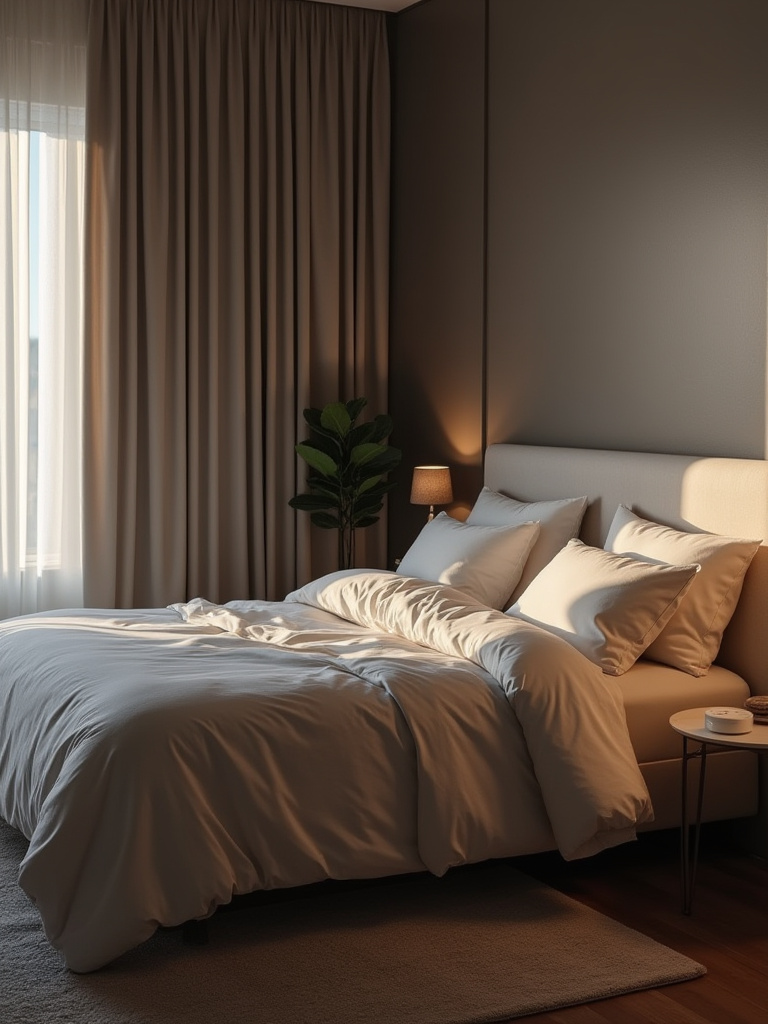
Creating a quiet environment is critical for deep, restorative sleep. I once shot a beautiful loft apartment with 20-foot ceilings and concrete floors. It looked amazing but felt stressful because every little sound echoed. The owner added a huge plush rug, heavy velvet curtains, and some acoustic art panels, and the difference was night and day. The room instantly felt calmer and more intimate.
18. Integrate Smart Home Tech for Effortless Comfort and Control
Smart home technology isn’t just a gimmick; it’s about precision and control. It’s about engineering the perfect environment for rest. Imagine programming a “bedtime” scene where with one command, your lights dim to a warm 2700K, your smart blinds lower, and a white noise machine turns on. It automates the creation of a perfect sleep environment.
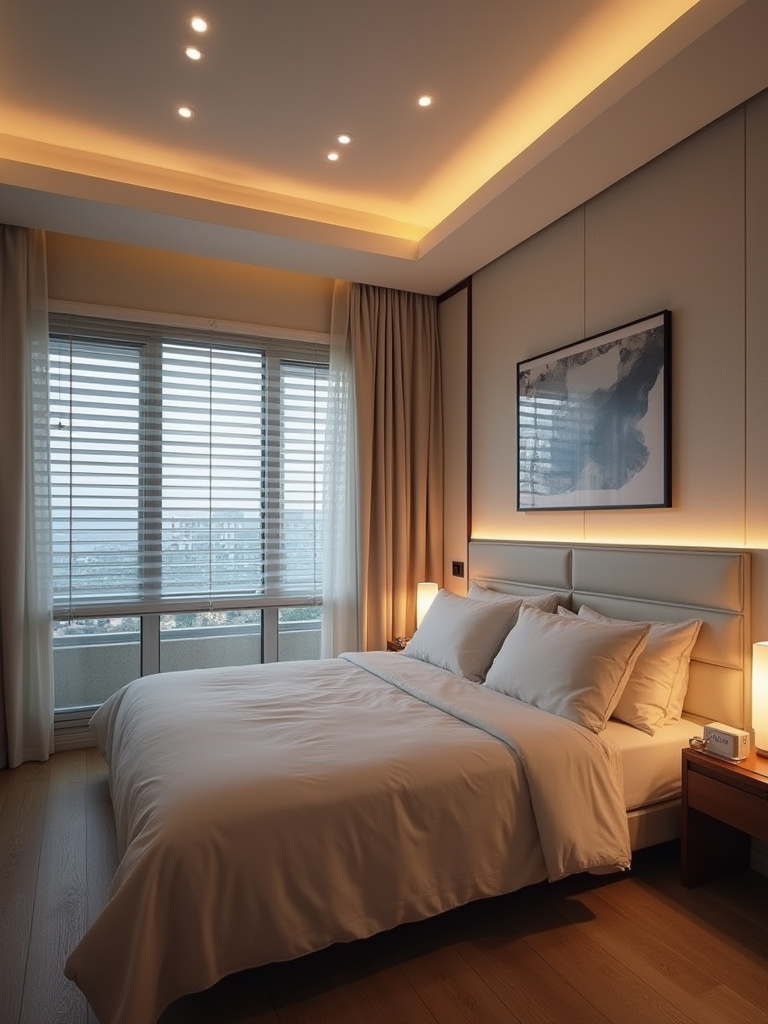
Even better is a “wake-up” routine. Instead of a jarring alarm, your blackout blinds can slowly rise, and your lights can gradually brighten, mimicking a natural sunrise. This is a far healthier and more pleasant way to wake up. Start small with smart bulbs or smart plugs. The goal isn’t to make your room a spaceship; it’s to remove friction and automate comfort, allowing you to relax more fully.
Conclusion
So there you have it. Building a better bedroom isn’t about finding the perfect shade of gray or buying a trendy new bedspread. It’s a methodical process. It starts with a solid foundation of purpose and planning, followed by smart furniture choices that serve that purpose, and finally, it’s finished with thoughtful layers of texture, light, and personality.
A truly successful bedroom is a system where every element works together. The light supports the color, the furniture supports the flow, and the textures support the mood. Stop thinking like a decorator and start thinking like a designer—or a photographer. Compose the shot. Pay attention to the technical details. If you focus on creating a space that is structurally and functionally sound, the beauty will follow. And you’ll have created more than a pretty room; you’ll have built a true sanctuary.
